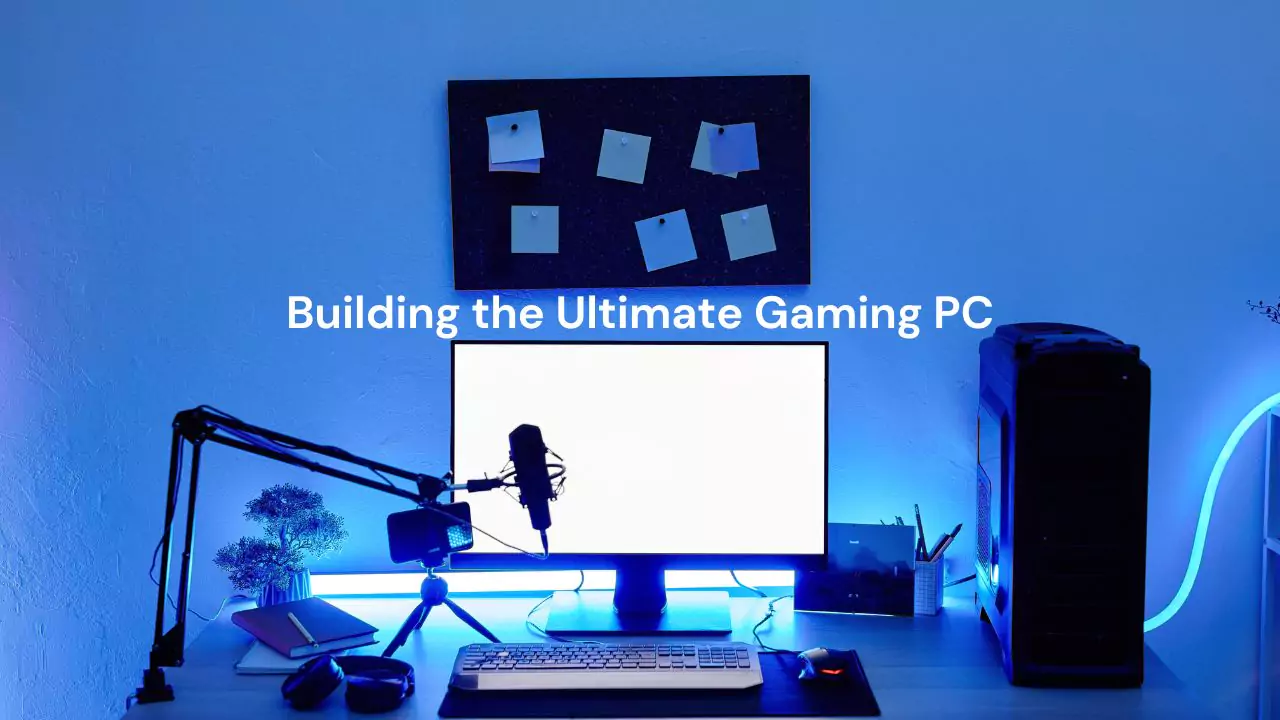In the ever-evolving world of personal computing, few endeavors are as thrilling as constructing a high-performance gaming PC from the ground up. Whether you’re a seasoned enthusiast or a newcomer to the realm of PC gaming, the prospect of hand-picking components and meticulously assembling them into a rig capable of delivering an unparalleled gaming experience is both exhilarating and daunting.
In this comprehensive guide, we’ll walk you through the process of building a gaming PC that can handle the most demanding titles, from the latest blockbuster releases to the most graphically intensive esports tournaments. By the end, you’ll have the knowledge and confidence to craft a machine that will take your gaming to new heights.
Defining Your Performance Goals
The first step in building a high-performance gaming PC is to establish your performance goals. What type of gaming experience are you seeking? Do you want to run the latest AAA titles at the highest settings? Or are you more focused on maintaining a consistently high frame rate for competitive online play? Your answers to these questions will help shape the components you select.
Consider factors such as the resolution you plan to game at, the refresh rate of your monitor, and the level of visual fidelity you’re aiming for. These elements will directly inform the processing power, graphics capabilities, and cooling requirements of your build.
Selecting the Core Components
With your performance goals in mind, it’s time to dive into the core components that will form the backbone of your gaming PC.
Processor (CPU): The central processing unit (CPU) is the brain of your system, responsible for handling a wide range of tasks, from game logic to physics calculations. For a high-performance gaming rig, you’ll want to prioritize a powerful, multi-core CPU from the latest generation of Intel or AMD processors. Look for models with high clock speeds and robust single-threaded performance, as these aspects are crucial for delivering a smooth and responsive gaming experience.
Graphics Processing Unit (GPU): The graphics card, or GPU, is perhaps the most critical component for a gaming PC, as it’s responsible for rendering the visuals in your games. Opt for a high-end GPU from NVIDIA’s RTX or AMD’s Radeon RX series, ensuring it has sufficient VRAM (video memory) to handle the resolution and graphical fidelity you’re aiming for.
Motherboard: The motherboard serves as the foundation of your system, connecting all the components and providing essential features. When selecting a motherboard, consider factors such as the chipset, the number and type of PCIe slots (for your GPU and other expansion cards), as well as the availability of advanced overclocking and cooling capabilities.
Also Read: TCP/IP in Computer Networking
System Memory (RAM): The amount and speed of your system’s RAM can have a significant impact on gaming performance. For a high-end gaming PC, aim for at least 16GB of fast DDR4 or DDR5 memory, with clock speeds of 3,000MHz or higher.
Storage: For storage, a combination of a high-speed solid-state drive (SSD) and a larger mechanical hard disk drive (HDD) is often the optimal solution. The SSD will provide lightning-fast boot times and near-instant game loading, while the HDD offers ample storage space for your game library and other files.
Assembling the Components
With the core components selected, it’s time to bring your gaming PC to life. The assembly process may seem daunting at first, but with patience and attention to detail, you can create a masterpiece.
Start by installing the CPU and cooling solution, ensuring proper thermal paste application and secure mounting. Next, install the motherboard into the case, taking care to route cables neatly and manage airflow. Then, install the RAM, GPU, storage drives, and any other necessary components, following the manufacturer’s instructions closely.
Remember to ground yourself to avoid static electricity discharge, which can potentially damage sensitive components. Additionally, take your time and double-check your work at each step to ensure a clean and efficient build.
Optimizing Performance
Once your gaming PC is assembled, it’s time to fine-tune its performance. This may involve updating drivers, enabling advanced power management settings, and potentially overclocking certain components (if your hardware and cooling solution allow it).
Experiment with different in-game settings, balancing visual quality and frame rates to achieve the optimal balance for your preferred gaming experience. Additionally, monitor your system’s temperatures and ensure adequate cooling, as overheating can lead to instability and potentially damage your components.
Conclusion
Building a high-performance gaming PC is a rewarding and empowering experience that allows you to tailor your computing experience to your specific needs and preferences. By carefully selecting the right components, assembling them with care, and optimizing their performance, you can create a gaming rig that will deliver an unparalleled and immersive experience for years to come.
So, roll up your sleeves, dive into the world of PC component selection, and get ready to take your gaming to the next level. Happy building!

